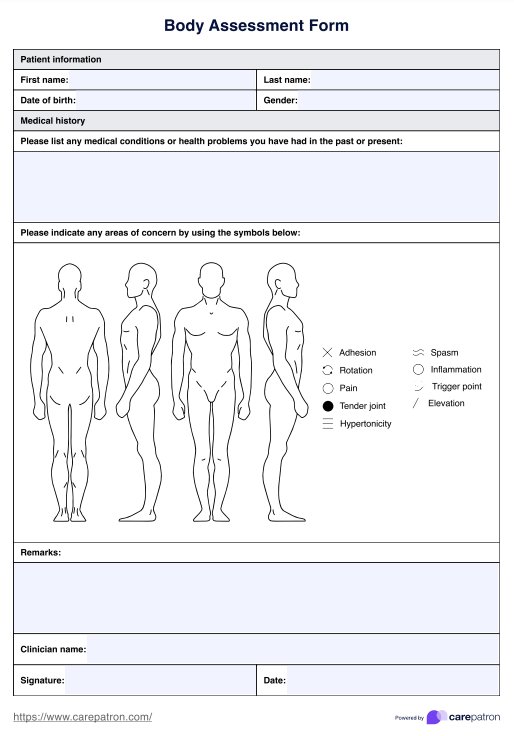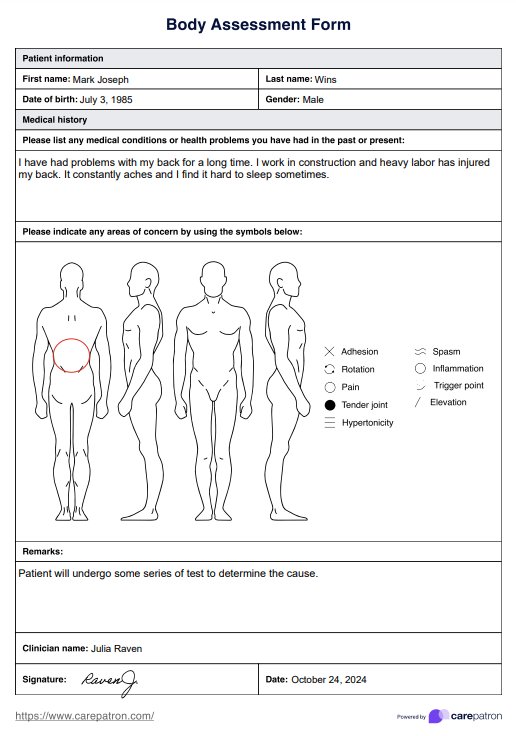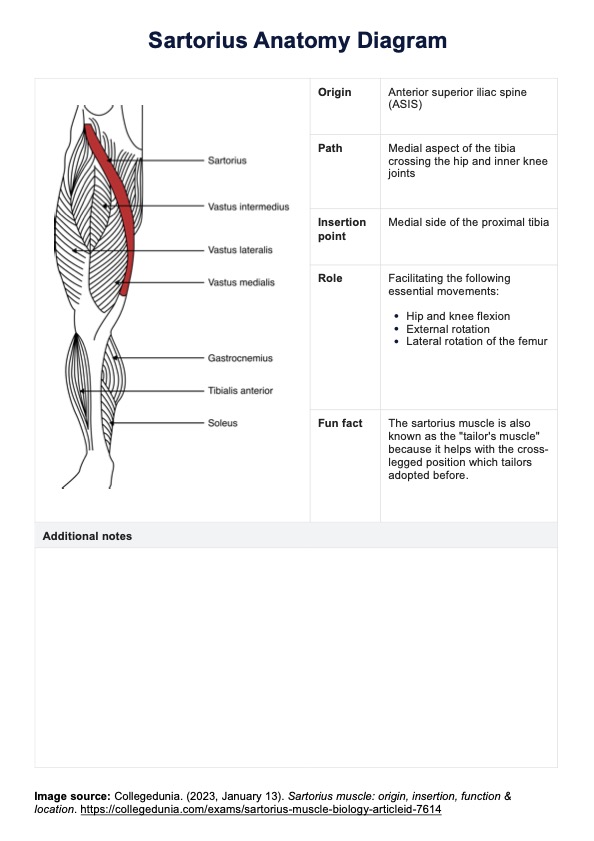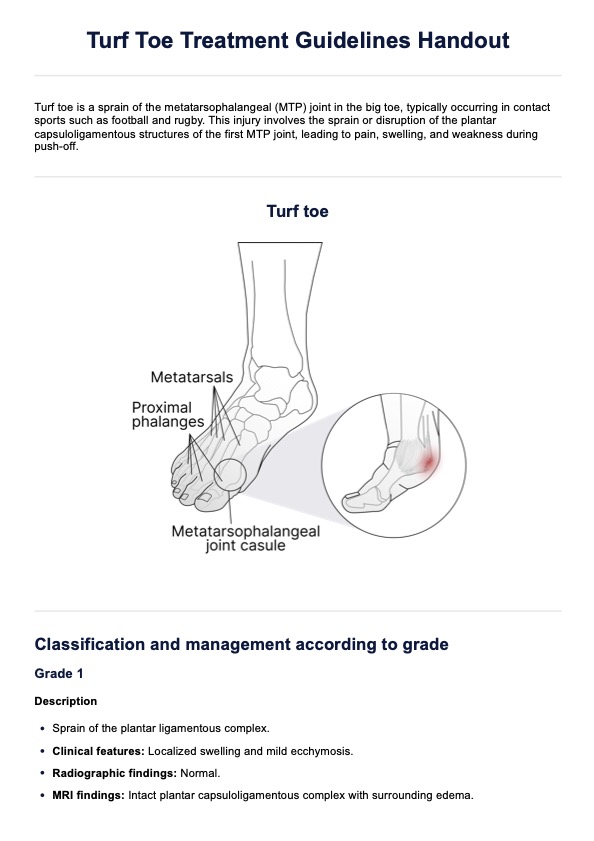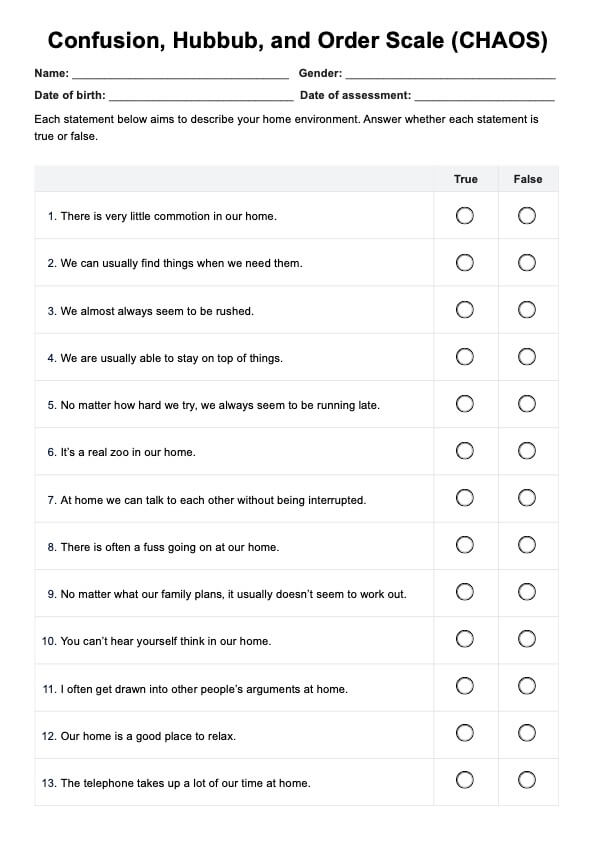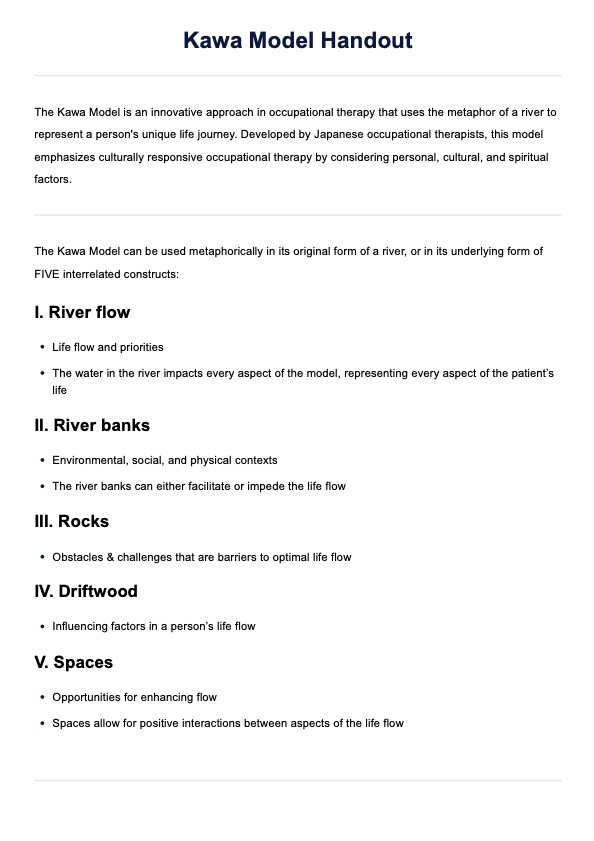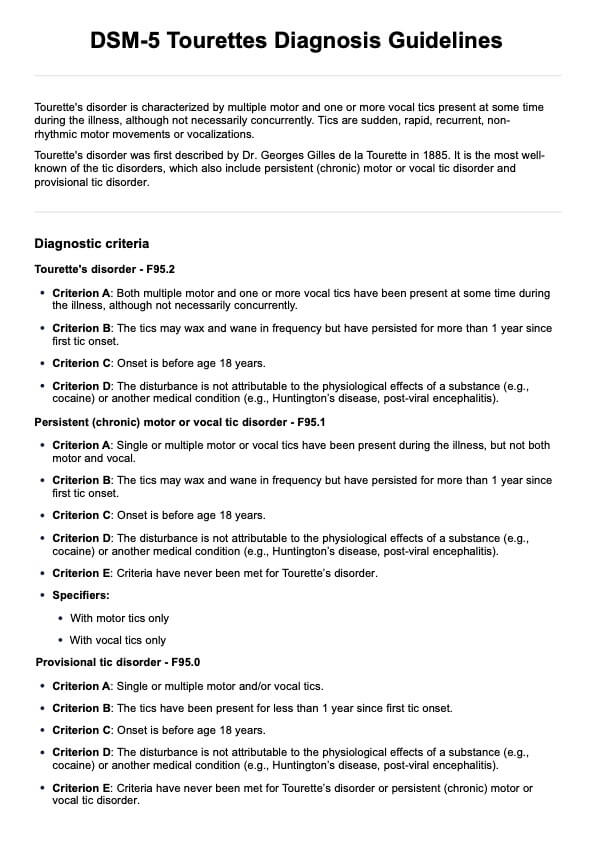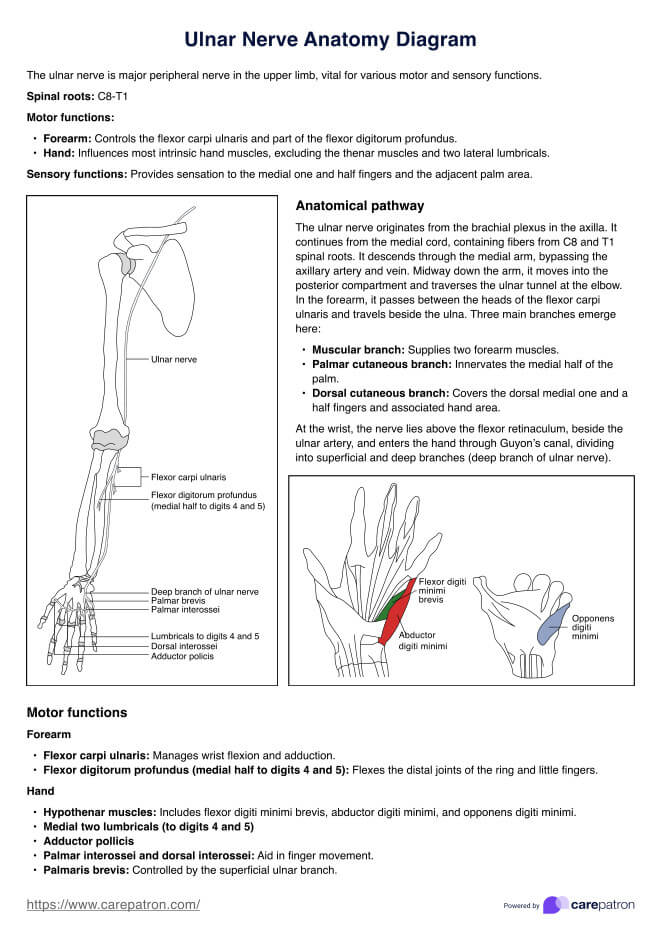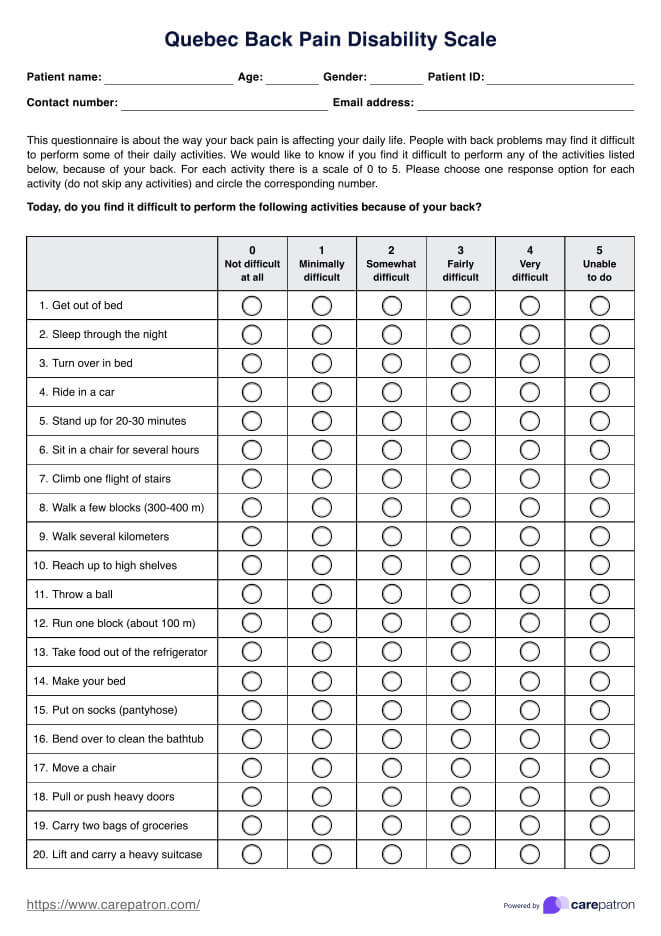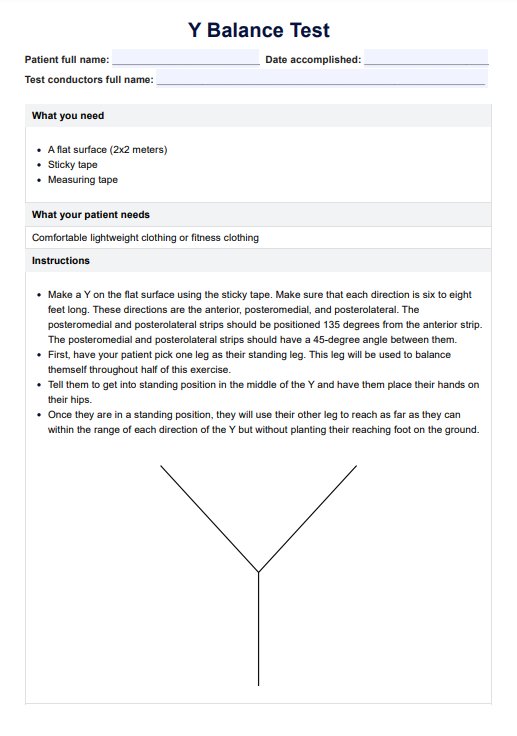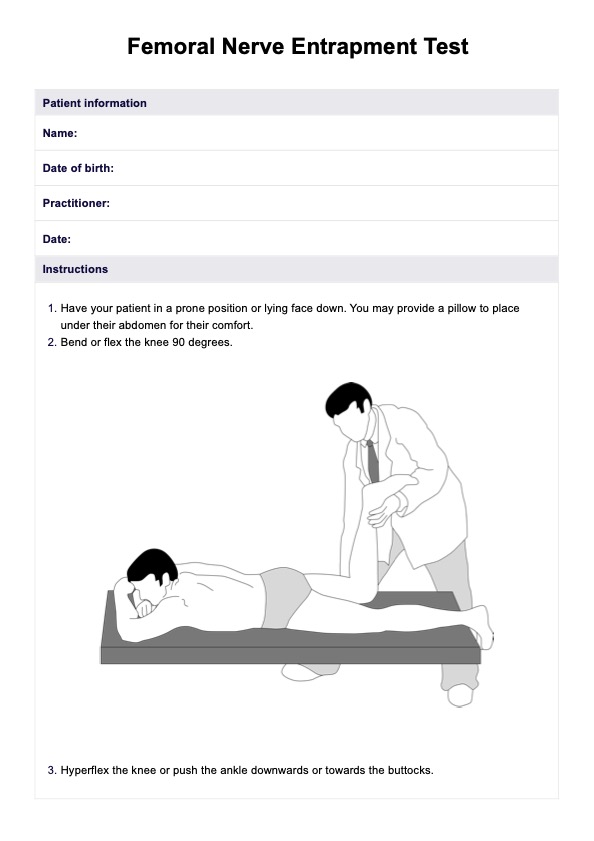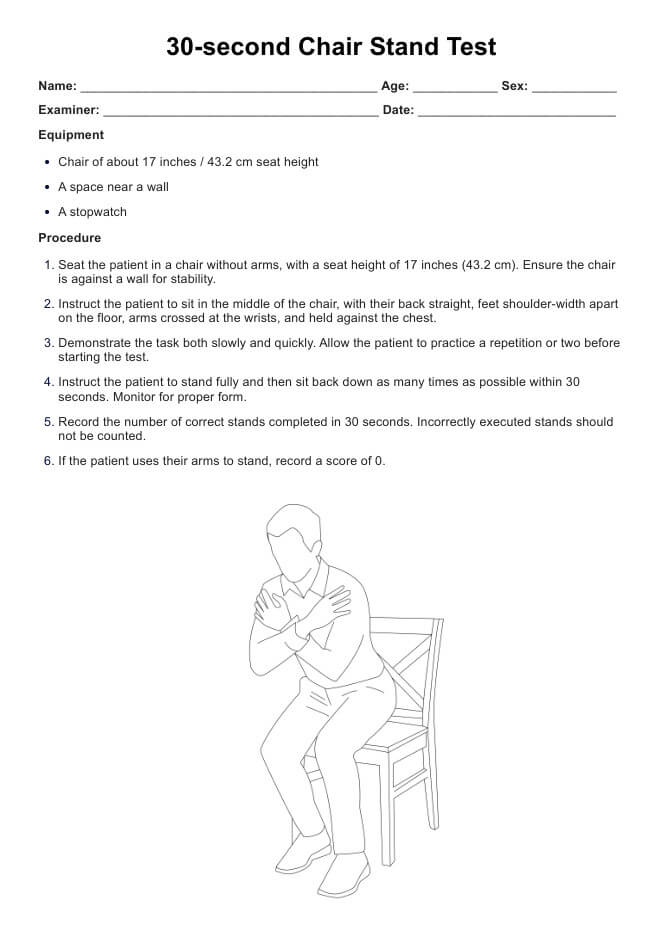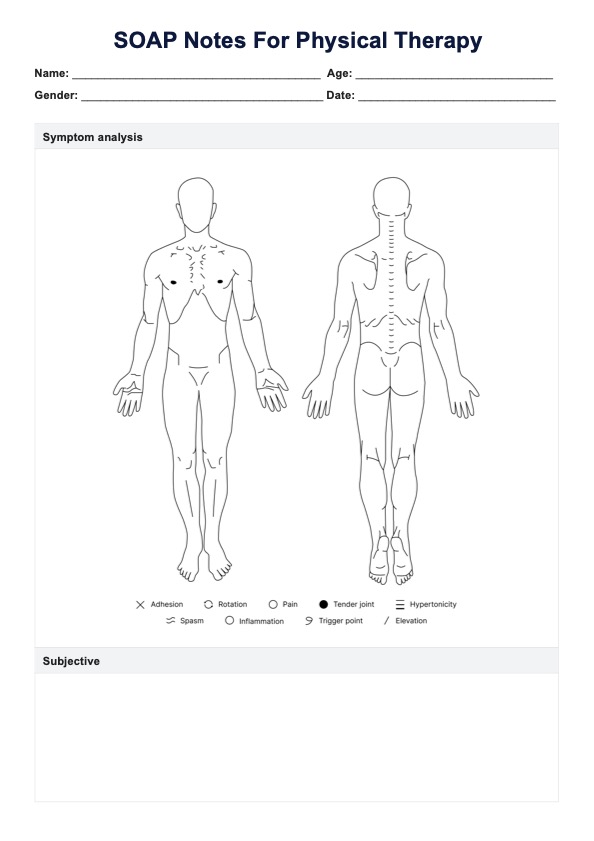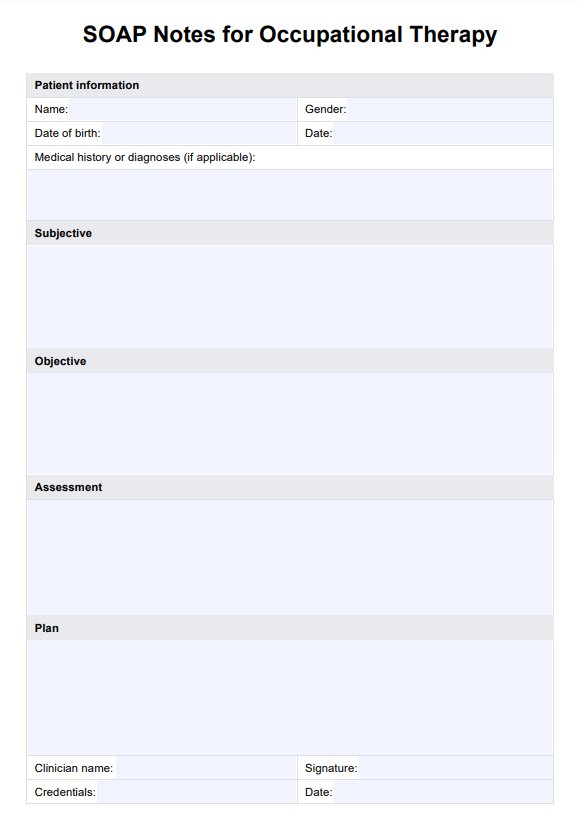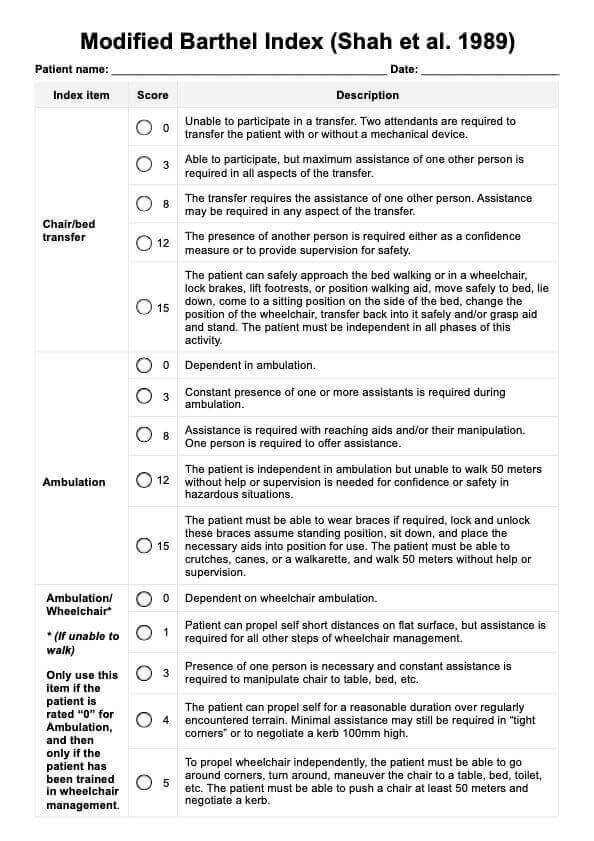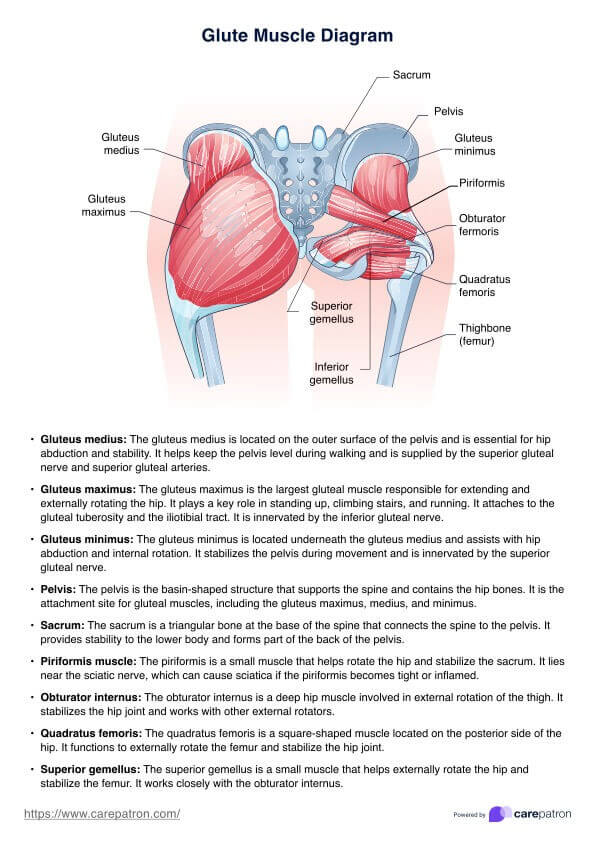Body Assessment Form
With a human body diagram, our Body Assessment Form will allow you to assess the symptoms and concerns of your patients for better clinical outcomes.


What is a Body Assessment Form?
Medical professionals use a Body Assessment Form to investigate mainly musculoskeletal injuries or peripheral nerve injuries. It aims to document the location, characteristic, duration, onset, severity, and range of relevant information associated with the patient's main complaint. It is a universal form that is not limited to any category of health practitioners. It can be used as an assessment tool for a range of health practitioners who work with physical pain and other symptoms.
Our Body Assessment Form features a full human body diagram from different angles so you can accurately mark any injuries or pain sites. It also has a remarks section so you can document assessment findings during a physical examination.
Body Assessment Form Template
Body Assessment Form Example
How to use this Body Assessment Form
We designed our body assessment chart to be intuitive. To use it, follow the steps below.
Step 1: Download the PDF
Download the PDF on your devices first. You can then choose to complete this form digitally or print it out. Alternatively, this template is also available in our Carepatron template library, which would give you more flexibility on the template format.
Step 2: Complete patient details and medical history
Fill out the essential information about the patient. We also provided a section for a medical history, which will definitely help you understand your patient's health status. Before conducting the assessment, you may also want to consider checking their general appearance or conducting a respiratory assessment, such as evaluating their vital signs, breathing pattern, skin color, and respiratory status.
Step 2: Mark the injuries
During the assessment process, mark the injuries using the corresponding symbols on the body graph. If you are not sure what symbol to use, we have included some marking symbols within the Body Assessment Form template. Our template contains four angles of the human body so you can mark areas accurately, especially during a head-to-toe assessment.
Step 3: Add additional information
To complete this full-body assessment sheet, go beyond simply marking the location and type of injuries. Explore all relevant details, such as onset, triggers that worsen the condition, and severity, and document these insights in the 'Remarks' section. This section is also ideal for noting abnormal findings, additional observations, or recommendations.
Step 4: Document and store securely
Once you complete the bulk of the assessment form, remember to document it in a secure and organized place. Everything in this form is strictly confidential and crucial for future treatment, so keeping it safe and accessible is necessary.
Benefits of this physical examination form
Using this form can benefit medical professionals in many ways, such as:
Visualized injuries
The form allows you to mark patient injuries on a body diagram, making the location of injuries more easily visualized and accurately represented. Patients often have difficulties describing the exact location of their injuries due to limitations of knowing anatomical terminologies, but a visual diagram is a universal language that most people can easily understand.
Improved accessibility
Our Body Assessment Form PDF can be used by any device with a PDF reader. We have designed our PDF to be directly fillable without needing conversion to a Word document or any extra step. Furthermore, we ensured that the form functions digitally or printed well.
Easily shareable
The PDF format is universal and easy to share, whether printed or sent digitally. Additionally, with a Carepatron account, you can customize or create your own forms using our template as a reference and conveniently share them with other clinicians or patients.
Easy to use
We have designed our PDF template so it is easy to use and intuitive. Even someone who is unfamiliar with technology will most likely be capable of filling out the form. If they still don't understand how to use it, you can print it out.
Commonly asked questions
To do a body assessment, you need to run a full analysis of the patient's presenting complaints regarding physical injuries and pain. You would want to explore a range of factors, including site, onset, characteristics, radiation, time duration, exacerbation factors, and severity. Feel free to follow any structure of symptom analysis, but this is where you can start.
Body assessments are done to assess injuries or pain in the physical body. They help create comprehensive documentation and an understanding of the presenting symptoms during assessment, which allows a medical professional to create or adjust further treatment plans.
A typical body assessment focuses on any physical injuries to the body and aims to perform a full analysis of the injury. However, what is interpreted as physical pain can also be caused psychologically or referred pain, which adds more nuance to the body assessment. Clinicians should treat 'phantom' pain equally as a physical injury that is perceivable to the naked eye. They must also be aware of what appropriate assessment techniques to use.


